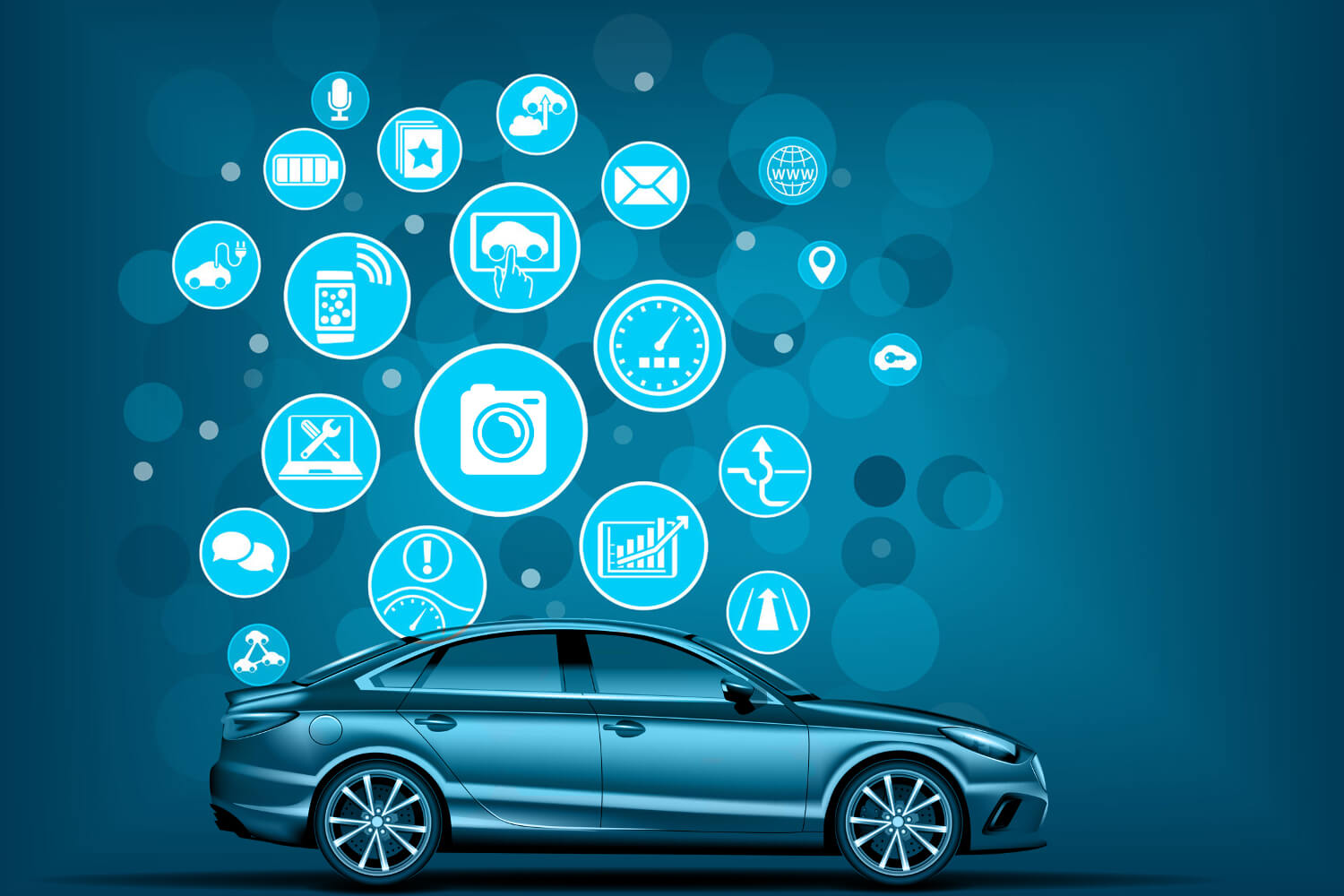 Traffic Signals Just Turned Green for Connected Cars
Traffic Signals Just Turned Green for Connected Cars
The age of Knight Rider is really upon us. ‘The talking car’, which once appeared in a movie, has turned out to be the reality today. With connected cars, the auto industry is on the brink of disruption as digital technologies penetrate and dampen the growth scale, changing the structure of the industry. Cars with increased mobility and connectivity are going to replace the conventional mode of operating cars.
As disruptive technologies rev up the automotive industry, connected cars turn out to be full-blown communicative objects. Being an integral part of the IoT family, connected cars no longer remain a black box with dedicated services. In-vehicle systems connected to the internet have enabled new services for consumers. Indeed, connected cars have changed the meaning of the driver-car relationship. The recent developments in the automotive industry clearly show that connected cars are at the front foot to create an interconnected environment. The message is definitely a positive one.
Key Drivers Driving Connected Cars
Consumer behavior is at the heart of automotive sales. Drivers across the globe are paying attention to the integration of digital technology in cars. The connected car of modern age represents a step change in form and functions. Features like real-time traffic information, personalized driving assistance, and smartphone – car synchronization have led consumers to rethink the notion of what a car is ‘for’.
Absolutely, today’s connected cars make use of mechatronics, artificial intelligence, and telematics. Such technological integration has aptly created connected cars to deliver an immersive information experience. Not to mention the dense fog of hype obscuring the automotive industry, the smart mobility services of connected cars are changing the driving experience immensely. Connected cars are shaping up the automotive industry with more improved efficiency, personalization, and safety.
The global automobile aftermarket will shift rapidly in terms of financial flexibility, operating models, and value proposition. Electronics, software, cloud services and analysis models of data will add to the transformation in revenues for makers. OEMs are investing billions in developing infrastructure and embedding technology. Opening research centers such as Ford’s unit in Silicon Valley and Jaguar Land Rover’s R&D center for software innovation are impressive moves to see connected cars delivering on their full promise.

Using big data in automotive
Real-time data integration combining mobile communication devices is another factor driving connected cars. Automotive is the hotbed of innovation among industries. Hence, big data analytics had to play a major role in connected cars. The valuable patterns hidden in vehicle data will improve the performance and health of cars, and add to the driver’s preferences and style. Data shared with OEMs and digital devices will also improve predict maintenance requirements, improving driver safety. It is simple to understand; emergency teams can reach and assist without passengers’ alerts, and the mechanic can stay reported as the car transmits performance monitoring data in real time. SAP Vehicle Insights, Microsoft connected vehicle platform, and Apple’s CarPlay are emerging platforms to help OEM’s collect, store and analyze vehicle data in real time.
However, while consumers are eager to experience connected cars, they also express concerns. Moreover, there are challenges beyond just technical aspects that may also hamper the rapid adoption of connected cars.
Speed Breakers for Adoption of Connected Cars
Consumers believe that information overload from various sources like infotainment systems might make the car too complicated. Additionally, drivers are concerned about the fact that new infotainment systems may lead to major distractions while driving. Hence, it is clear that users also have an eye on practical experience standards of connected cars. Additionally, untested concept cars in pilot version lack consumer awareness on the usability of connected cars.

Cost-to-consumers:
Another major challenge is the cost of upgrading and maintaining state-of–the-art connectivity in existing cars, which will require several components to be replaced. In addition, the cost of such devices will be a barrier for existing customers to switch to a dynamic digital platform of connected cars.
Safety and data security:
Lack of consumer acceptance due to security and data safety concerns in connected car is a major barrier for the industry. Unless the OEMs offer a mechanism to mitigate security and data protection concerns, the connected vehicles market growth would remain restricted.
Brand Identity:
Effective translation of brand identity to consumers is a major challenge for OEMs. With the integration of multiple resources from varied third-party players, maintaining brand identity in connected cars is a daunting task for OEMs.
Infringement upon civil liberties:
This can be another facet of the challenge for adoption connected cars. The ability to track locations and potentially impair certain functions can turn out to be a major concern for civil liberty. At the other end, users certainly have mixed feelings regarding their information being shared with third parties.
As the industry is still in the early stage of development, the operating system, connectivity, digital apps will change constantly, and hardware compatibility will be a challenge for OEMs. In summary, connected cars are an extension of consumer individuality.
The road ahead for automotive OEMs is rife with uncertainties. To succeed in delivering the best, OEMs have to overcome speed breakers, steer pits, and clear traffic jams. Simply, keeping up with technological disruptions is not the way out.
What Lies Under the Hood for OEMs
A vehicle that is able to optimize its own operation and maintenance while keeping the passenger’s convenience intact – connected car is definitely a technological marvel. Nonetheless, such changes have started transforming the face of the automotive industry. As connected cars mature, automakers will be pressed to accelerate transformation. This shift will be accorded by transformation in business models, mergers and acquisitions approach, strategic partnerships, talent pools, and management.

Partnership is key for success
Automotive players are preempting the connected car market by close partnerships with cross-industry players such as telcos, network companies, software providers, etc. The essential fabric to make this model a success lies in the interoperability of connected devices and selection of key partners.
Initial focus to be on luxury segment:
The luxury car segment will adopt connected cars in the initial phase. The cost of such systems will be huge for the mid-range cars. Hence, the focus of OEMs is likely to be in the luxury segment. For creating customer acceptance, automakers must adopt a holistic approach to build end-to-end digital platforms. Digitization must reflect on internal processes and user experience as well. Such a shift demands high-tech software development and integration skills. This involves prioritizing in-house talent, and a shift in the resource strategy. Hence, it redirects OEMs to build a dynamic mergers and acquisitions approach for consolidation and cost effectiveness.
Customer centric approach for sales effectiveness:
In addition to strengthening strategic partnership models, OEMs must also provide Car-as-a-Service (CaaS) functionalities to consumers. Functionalities to secure connectivity in cars can be a whole new opportunity for OEMs. To improve cyber security capabilities, OEMs must focus on business models to seamlessly deliver services as consumer demands evolve. OEMs can also develop open-source platforms (ex. BMW connected car platform and Audi Connect Easy Delivery) to provide operating systems for infotainment services in connected cars. Bundling of different services, configuring supply and redefining delivery channels underlie the effectiveness of connectivity solutions. OEMs can broaden their overall mission of connected cars by defining value proposition, understanding consumer demands, strategic positioning, and balancing pricing standards.
Connected Cars – Down the Road
Your car of the future is going to know a lot about you. Your car is going to vibrate when you are drowsy. Ultimately, your connected cars might also ‘self-park’, and return to pick you up at your command – ADAS. The incredibly powerful ADAS concept will certainly have a dramatic effect on connected cars. Enabling the drive, ADAS is set to position 220 million connected cars on the road globally. The sheer revenue of the auto industry is estimated to grow by 33% and reach USD 141 billion by 2020.
The excitement continues to build with the promises that tech players are making. Yet, massive computing power and high-speed communication systems are on the way to define the future of connected cars.
A significant price is at stake – OEMs can truly bring connected cars to reality. And the ones, who realize this first, will have a competitive advantage. The possibilities are endless, and you never know what’s around the next corner.









